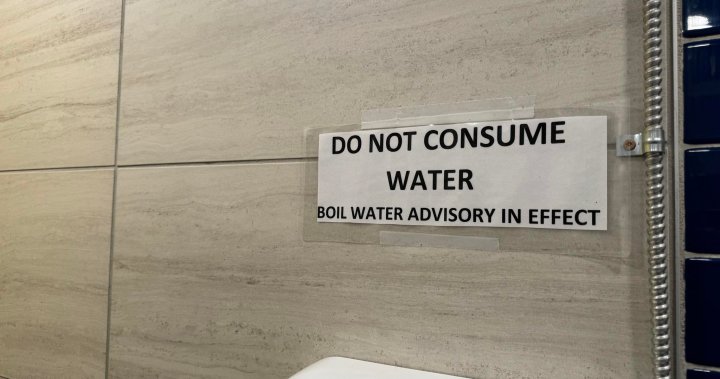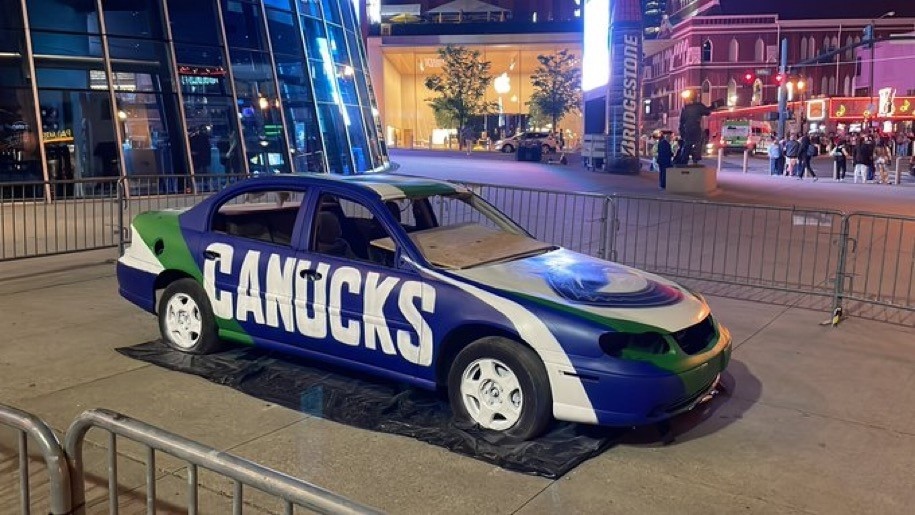Eva Kuper said it’s only due to a “series of miracles” that she’s still alive.
She was only two years old when, 80 years ago, she and her mother were forced to board a train leaving the Warsaw ghetto. It was headed to Poland’s Treblinka extermination camp.
Somehow, her mother’s best friend and cousin, who worked as a guard at the Warsaw ghetto’s jail, heard they had been called. She rushed to the train.
“Had she come a minute later or a minute earlier, she would not have seen us,” Kuper said. “But she saw my mother holding me, being pushed onto one of the cattle cars. And she ran to that cattle car and started to scream at the top of her lungs that I was her child.”
Kuper’s mother was permitted to hand her off – hand to hand, person to person – until she was thrown off the train and into the woman’s arms.
“And the cattle cars eventually pulled away and nobody on those trains was ever seen again,” she said. Including her mother.
Now, Kuper tells that story in schools, knowing, she said, that those students will likely be the last generation to hear the stories from the survivors themselves.
It’s why she said the work of the Holocaust Museum of Montreal is so important.
On Monday, the museum announced that it had received $80 million to expand into a new space on Saint-Laurent Boulevard, the historic heart of Montreal’s Jewish community.
Kuper, who is on the board of the museum, said the money was a “dream come true” to make sure the reality of the Holocaust, and its impact on the city where so many survivors settled, is never forgotten.
More space to show artifacts, share stories
Sarah Fogg, the head of communications for the museum, said it was amazing to know that the museum would soon have a bigger space.
“Demand for our museum’s services is really astronomical, and before the pandemic, we really couldn’t keep up,” she said. “So this project is really a long time coming.”
The new building will include holograms of survivors sharing their stories, a new auditorium, a memorial garden, and larger spaces for both permanent and temporary exhibitions.
WATCH | Eva Kuper describes how she survived the Holocaust:
Eva Kuper, standing in front of the Montreal Holocaust Museum, tells how her life was saved just as she and her mother were being loaded onto cattle cars for transport away from the Warsaw Ghetto. 1:45
Fogg said the museum has room to display only about 4,000 of its 13,500 artifacts at any one time.
Those items include yellow star patches, clothes from concentration camps and ashes from Auschwitz. Fogg said it was especially important that the museum, which was started by Holocaust survivors, gets to return to the area the community has often called home.
“This is where the Jewish community, the immigrant Jewish community, really began. So, in a way, we’re returning to that history,” she said.
Sebastian Schulman, the executive director of KlezKanada, a Montreal-based non-profit representing Jewish traditional arts and Yiddish culture, said building the museum there is more than just a symbolic gesture.
“That is a neighbourhood where there’s lots of students, there’s lots of tourists. It’s really the heart geographically and historically of our city,” he said. “It really makes a difference that that sort of museum will be there.”
Schulman said it’s hard to overstate the influence that the Jewish community, including Holocaust survivors, had on the city. After Israel and New York City, Montreal received the most Holocaust survivors of anywhere in the world.
“Yiddish was the third language in Montreal for much of the 20th century,” he said. “This is a real centre, even today, of Yiddish culture, of Yiddish literature and music. And that is not something you will find really elsewhere in North America or anywhere in the world.”
The effect, he said, can still be seen — from everything from Leonard Cohen and Schwartz’s to the city’s famous bagels. “These are symbols of Montreal,” he said.
Need for education, now more than ever
Schulman said now, with rising anti-semitism and appropriation of Holocaust imagery, it was especially important to have a museum that can serve to educate the public.
Yellow stars and Nazi flags have recently been seen at protests against vaccine mandates and other health restrictions.
“It’s up to those of us who are still around, who know this history and care about this history, to build institutions like this to make sure the right story is told. A story that recognizes the lives lost recognizes the struggles of survivors,” he said.
“So it can’t be abused by the misinformed or used to promote a narrative that really has nothing to do with the Holocaust.”
Heidi Berger, the founder of the Foundation for Genocide Education, is the daughter of two Holocaust survivors. She said she’s seen a rising tide of anti-Semitism and Holocaust denial online, and institutions like the museum are “badly needed.”
“These surveys happen, half of Canadians can’t even name a single concentration camp. Two-thirds of students don’t even know that six million Jews were killed during the Holocaust,” she said. “There’s a terrible lack of education.”
Kuper, the Holocaust survivor, agreed that more needed to be done to educate people about what happened.
“History is bound to repeat itself if we don’t remember it and if we don’t take the lessons that it teaches. And unfortunately that’s been very difficult, because we haven’t learned the lessons well,” she said.
“That’s why it’s so important that we continue to try.”







More Stories
Air Canada apologizes to national chief after flight crew took her headdress away | CBC News
Princeton, B.C. close to having multi-year boil water notice lifted | Globalnews.ca
First Nation in Ontario declares state of emergency over discharge from nearby plastics plant | CBC News